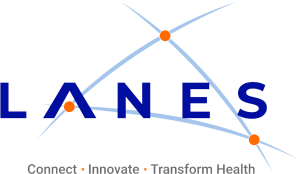In the ever-evolving world of healthcare, data sharing between Qualified Health Information Organizations (QHIOs) is a vital component of patient care and influencing positive patient outcomes in California. As these QHIOs become increasingly interconnected, it’s important for health and social service organizations to understand the differences between QHIOs, the significance of QHIO to QHIO connections, the implications for data quality, and how these factors will impact your organization and care teams.
What information do QHIO share with other QHIOs in California?
QHIO to QHIO data exchange allows for the seamless transfer of patient data across various healthcare organizations, facilitating better coordination of care. When health data is shared from one QHIO to another, it ensures that healthcare and social service providers have access to your comprehensive medical history, regardless of where patients receive care. This connectivity is crucial for improving patient outcomes, reducing redundant tests, and ensuring continuity of care.
What Kind of Data Quality Can I Expect?
The quality of data shared between QHIOs can vary based on several factors, including the data source, the standards used by each QHIO, and the technology supporting the data exchange. Generally, you can expect high-quality data to be shared, but it’s important to recognize that data accuracy and completeness depend on how well each QHIO maintains its systems and adheres to data standards. As an informed buyer, it’s important to inquire about the data quality standards each QHIO follows to ensure the best possible outcomes. The Health Insurance Portability and Accountability Act (HIPAA) standards also impact the kinds of data that can be shared between QHIOs. For instance, social determinants of health (SDoH) data and sensitive information such as substance use disorder data are not shared to protect patient privacy.
What is the Difference Between Different QHIOs?
Each QHIO has its own attributes and strengths, making it a better or worse fit for different organizations. Each QHIO also has different levels of connectivity, data-sharing capabilities, and focus areas. Some QHIOs may excel in certain specialties or have stronger partnerships with specific healthcare providers, or specific state efforts, such as connecting Medi-Cal members to Enhanced Care Management (ECM) and Community Supports (CS) benefits. When choosing a QHIO, consider their track record, the scope of their network, and how they align with your organization and patient’s needs. Understanding these differences can help you make a more informed decision when selecting a QHIO.
Are QHIOs Blocking Information?
While regulations are in place to prevent such practices, information blocking is still a concern for many healthcare providers and patients. If you’re worried about information blocking, it’s worth inquiring about the policies and practices of the QHIOs you’re considering. Transparency and adherence to regulations are key indicators of a trustworthy QHIO.
Why Does The Way a QHIO Presents Data Matter for Providers?
Each QHIO has a unique user experience that influences the way data is presented and visualized. For healthcare and social service providers, how data is presented is a critical component of their ability to make health and social service information usable. Effective data sharing should ensure that the information is easily accessible, clearly organized, and timely. Poor presentation can lead to misunderstandings, delays in care, and increased workloads for providers. Providers rely on well-organized data to make quick and accurate decisions, so the format in which data is shared should facilitate their work, not hinder it.
Why Do QHIO Decisioning Tools Matter?
Just like data presentation, decisioning tools are essential for providers to efficiently interpret and act on shared data. These tools, which include risk stratifications, filtering tools, and population health analysis, may vary between QHIOs and may not always align with the exchanged information. Beyond just presenting raw data, advanced decision support tools can analyze trends, highlight critical information, and suggest potential actions. These tools help providers make better clinical decisions, ultimately leading to improved patient care. The decisioning tools offered by QHIOs can vary significantly, including how data is received and ingested from other QHIOs are presented. It’s important to inquire about the available tools and how they integrate with your practice.
How important is system training?
As with any new system or process, including training resources and information on how to most effectively and efficiently use tools can help your providers and care teams adopt them more quickly and accurately. One of the things we’re most proud of at LANES is our commitment to working directly with clinical teams during implementation. LANES is one of the few organizations that takes the time to sit down with providers, understand their workflows, and tailor the integration process to their specific needs. This hands-on approach ensures that the data sharing system works seamlessly within the clinical environment, leading to better outcomes and smoother adoption. When choosing to work with any QHIO, understanding how they will support your teams, both initially and ongoing, with technology adoption should be high on your list to ensure long-term success.
Navigating the complexities of QHIO selection in the context of QHIO data sharing can be daunting, but understanding these key aspects can help you become a more informed buyer. Whether you’re a healthcare provider or a member of a social services care team, knowing how QHIOs operate, the quality of data they provide, and the tools they offer can significantly impact your experience. By choosing the right QHIO, you can ensure that the health information you receive and contribute to is used effectively to enhance care and improve outcomes.

